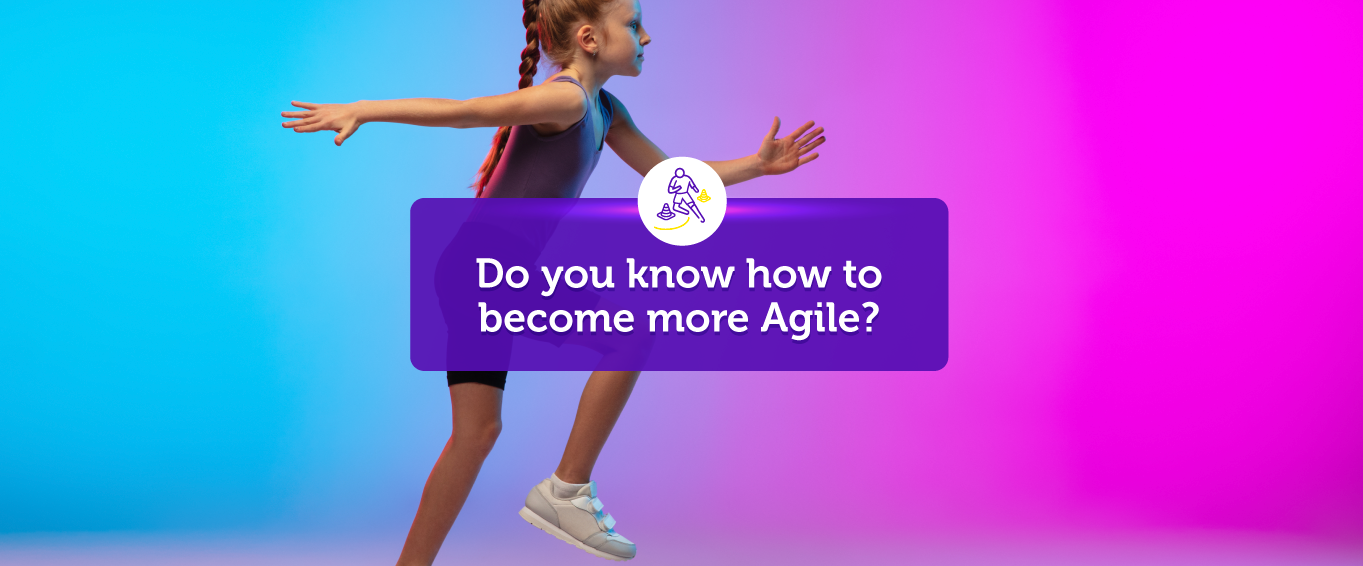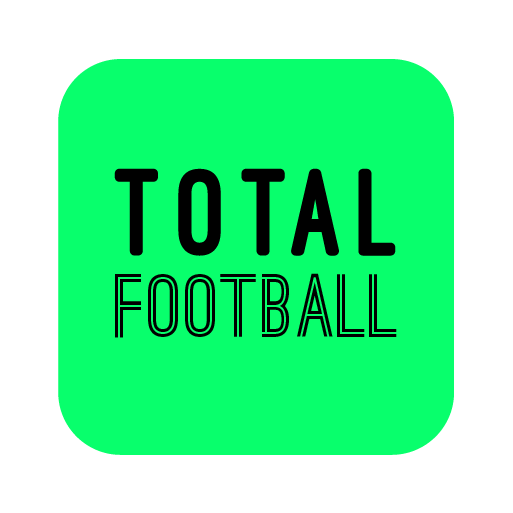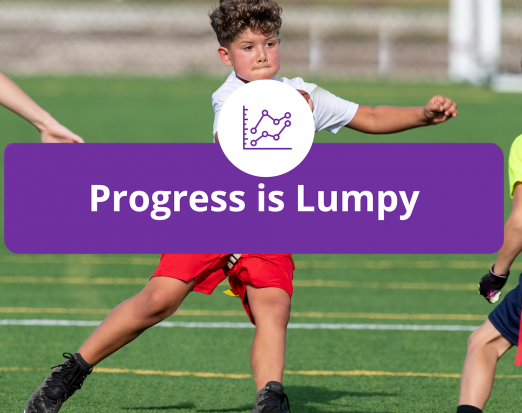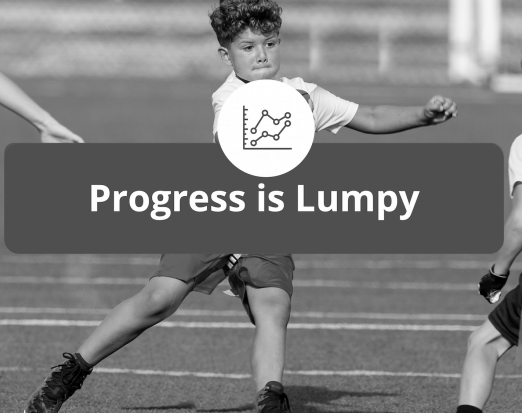Do you know how to become more Agile?

Agility is made up of two main components: Changing Direction at Speed and Reacting to an external stimulus when changing direction. This is really important to understand for all coaches and all athletes.
Agility is often mistaken for just changing direction. However, when practiced like this, it can be pre-programed, it becomes a closed skill, as we often tell the athlete the route to take when performing a certain drill. However, for footballers, and many other athletes, the need for agility doesn’t come in pre-programmed or predetermined situations – it often comes in the midst of chaos – when trying to dribble in-between defenders, to be first to the ball, or goalkeepers reacting quickly to stop a deflected shot resulting in a goal.
Changing Direction, does give us the base to develop our all-round agility, so it is really important to do this first, so…
How do we improve our Change of Direction Speed?
STEP 1: Strength Training
This improves the athlete’s relative strength, which can be transferred into improving maximal speed. As such this will allow the body to move quickly and to be more “stable” through the change of direction. You can see examples of Strength Specific Activities in the video below. Younger players will develop strength through bodyweight exercises, such as prisoner squats before more resistance based activities after players peak height velocity (growth spurts), such as Goblet Squats.
STEP 2: Plyometrics Drills:
Plyometric training refers to a specific exercise modality that is built around jumping, hopping, bounding and skipping movements. They are performed in an extremely fast and explosive manner (Lloyd, 2012). They are designed to continually work the muscles through their short-stretch cycle to promote the improvements in strength and power, which in turn, should have a positive impact on change of direction speed, and eventually agility. Examples of these activities can be seen below.
Start with bounce plyometrics, before developing into bounding type plyometrics.
Build in Speed Work: Remember, one of the key concepts of Agility, is to do things quickly, and so it makes sense, that if we are trying to improve our agility, that we should try and improve our speed too. There is limited correlations to Speed developing Change of Direction due to the fact that most Speed activities are completed in a straight line, however, for many sports the two go hand in hand, and from a skill acquisition perspective, rather than just a physical development point of view, it will do no harm to add some speed work to your training.
How to Develop Agility?
As discussed, Changing Direction, combined with reacting and acting on an external stimulus makes Agility. To become Agile, you must give yourself the appropriate Physical base, through Strength Training and Plyometric Training, however, you also need to try and replicate the chaos of game play.
So how do you practice for Chaos? It is something that we are often asked by athletes and our team of coaches have come up with some simple ideas that you can integrate into your training, or players can try at home.
- Give your training CONTEXT: Using the activities in the Total Footballer App, try to come up with your own mini games within your training. For example, try to complete in the quickest time, or with the fewest mistakes etc. The example below is a great example of this – how many turns, can you do in 30 seconds. To make it even more chaotic, ask a friend to do the same at the same time, or even play 1v1 in the area!
- Brain Training! Using coloured cones, different start and stop words etc. to keep players thinking throughout the session. Some coaches pose questions rather than directions, for example, even numbers run to the red cone and odd numbers run to the yellow. Players can also start in a line in the centre of a small area, performing basic utility movements. On command, players will run right of left – coaches to also use differing commands to allow the players to solve a problem to get there, e.g. Pose simple Maths questions, odd numbers run right, even numbers run left!
- Play with a Friend: Playing with a friend, or with multiple friends will pose more problems that will need solutions. Using your friends to help push you along is similar to facing opposition. Try and overcome all problems quickly and reactively. Playing 1v1, 2v2, 3v2 etc. will force players to use agility in game realistic situations. There is a saying amongst football coaches about letting the game being the teacher – it can also help develop components of fitness.
- Play in different positions: If you are a defender in your sport, sometimes play as a striker and vice-a-versa, it will give you a new understanding of your sport and will allow you to pick up on information (stimulus), quicker!
- Play Tag: It may sound basic but reliving this childhood game can support with the development of agility – think of the speed that you play this game at, the number of times you change direction, but also the number of times that you need to react to the “tagger” to make sure you don’t get caught! Not to mention, it is great fun at all ages!
Want to become a better footballer?
Our Sports Apps below can help
The Total Football App, is designed to support players of all ages and skill levels. It is the only Football Coaching App that integrates 5 phases of skill acquisition and long-term athletic development, meaning that all sessions and activities are designed to meet your current skill level whether you are just starting out, or are an experienced academy player. All our turning sessions are designed by UEFA Qualified Coaches and are supported by further sessions in:
Ensuring that players aren’t just practicing but are practicing with the highest quality. We also have a range of physical development practices, healthy lifestyle sessions, and psychological tips to help develop the total footballer. If your child needs help developing their turning, or any part of their game, you can try the app for free now!
Strength and Conditioning Platform for Clubs and Academies
Our Total S&C platform helps coaches to deliver a LTAD and S&C programme efficiently to a large number of athletes across all age groups playing different sports.
Our Strength & Conditioning platform consists of a Portal for the coaching team, enabling them to modify training sessions, monitor players training history, input test results and identify players who are sports ready. The athletes are provided their own S&C Player App which allows them to take control of their own training, self-test, log exercise history and track progress.
We get athletes sport ready. We reduce overuse injuries and burn out. We help to develop independent and healthy athletes.
- Automated session generator saves time
- Monitor athlete adherence and progress
- Online management portal for coaches
- Training App for all athletes
- Testing and profiling to identify sport readiness






